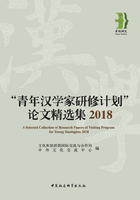
Cultural Diplomacy
Public diplomacy,according to Cull(2009,p.18)involves “collecting and collating data about publics and their opinions overseas”(Cull 2009a,p. 18); efforts to make “cultural resources and achievements known overseas”(Cull,2009a,p.19); “international communication activity to actively promote a particular policy and ideas…”(Cull,2009,ap.18);“technologies of radio,television and Internet to engage with foreign publics”(Cull 2009,p.21). Cultural diplomacy is a component of public diplomacy and may entail a national approach “to support the export of representative samples of that national culture in order to further the objectives of foreign policy”(Gienow-Hecht & Donfried,2010,p.15).More traditionally,cultural diplomacy,refers to the ability to persuade through value,ideas and culture(Nye,2004),intangible power resources based on culture,ideology and institutions(Nye,1990). From this perspective,cultural diplomacy is part of foreign affairs and international relations,a key ingredient to success in world politics(Nye 2004).
It is thus vital to assess the environment in which cultural diplomacy is set to be effective,meaning that the historical local and national conditions of a particular country must be considered in order to make cultural diplomacy impact effective(Schneider,2003). What makes cultural diplomacy further effective is that should maintain a separation from the political issues of diplomacy,and as Cull(2009b,p. 24)illustrates:“be credibly connected to the source of culture rather than policy and helped by distance from the makers of foreign policy”.This makes cultural diplomacy,in its different forms,particularly effective for diplomatic outreach and a basis to construct long-term relations.
In terms of structure,the first section discusses a conceptual outlook on cultural diplomacy and reviews the foundations of the country’s strategic and ideational thinking,as well as the scattered actor structure. Second,Chinese cultural diplomacy initiatives are reviewed in Germany through media,language promotion and art initiatives. In the same section,available data on German public opinion regarding China is assessed. Third,Chinese cultural diplomacy initiatives are reviewed in Brazil through media,language promotion and art initiatives. In the same section,available data on Brazilian public opinion regarding China is assessed. Lastly,the conclusion brings the two different contexts into perspective.